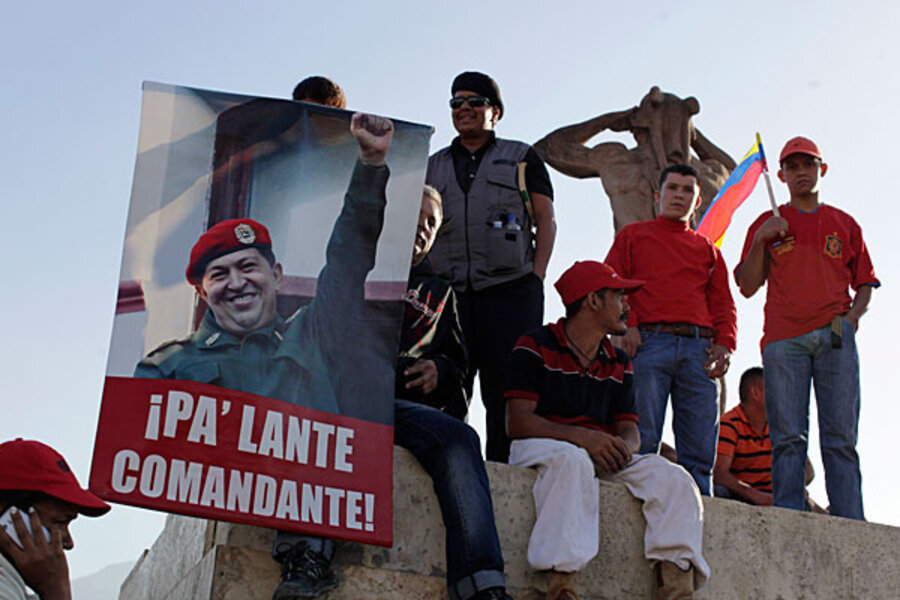Chávez funeral: How do you spot a true Chávista?
Loading...
| Caracas, Venezuela
They spend all day in line in the searing heat for a chance to pay their respects. For Hugo Chávez’s supporters, waiting in line for 12 hours or more to spend a few seconds in front of his coffin has become something of a required pilgrimage.
“It’s something that all Chavistas should do. Something they need to do,” says Higdalia Azócar, who was not deterred by stories of daylong waits. “We came here for the love. We wouldn’t miss it.”
The line stretches for miles, weaving through shade and sunlight, past public parks and in front of the bleachers where Venezuelans watched Chávez salute military parades.
On Friday morning, state-run television said more than 2 million Venezuelans had made the trip to the low-slung military academy where Chávez’s open casket has been since Wednesday.
Vice President Nicolas Maduro, who will be sworn in as interim president this evening, on Thursday extended the viewing for an additional seven days due to the response. Thereafter, Chávez’s body will be embalmed, much the way Russia’s Vladmir Lenin and China’s Mao Zedong were, and displayed in a glass case for eternity, Mr. Maduro says.
Once inside, visitors said they saw Chávez wearing his signature red beret and sash. Photography was not permitted, but visitors say that on Wednesday and Thursday, Chávez was dressed in a blue suit. That was swapped out this morning – before his funeral – for his military fatigues.
“I was filled with sadness when I approached his casket,” says Juana Uscategui, an elementary school teacher. She waited 15 hours in a wheelchair to catch a glimpse. “When I finally saw, I was overcome with joy, as he was finally resting. He wore his red hat, his suit and medals. He was beautiful.”
For Lenin Benitez, a political organizer, it was a two-day journey.
After driving overnight from the state of Lara in the northwest, he queued up because it was “necessary to see him again and to show to the world that Venezuela stood with their president.”
He adored the idea of embalming the president.
“In the rest of the world, people tell their children stories about fictitious heroes, like Batman and Robin,” Mr. Benitez says. “Here in Venezuela, we can tell our story of Hugo Chávez and his deeds. But more than that, we can show him to our children and continue to inspire the revolution.”





